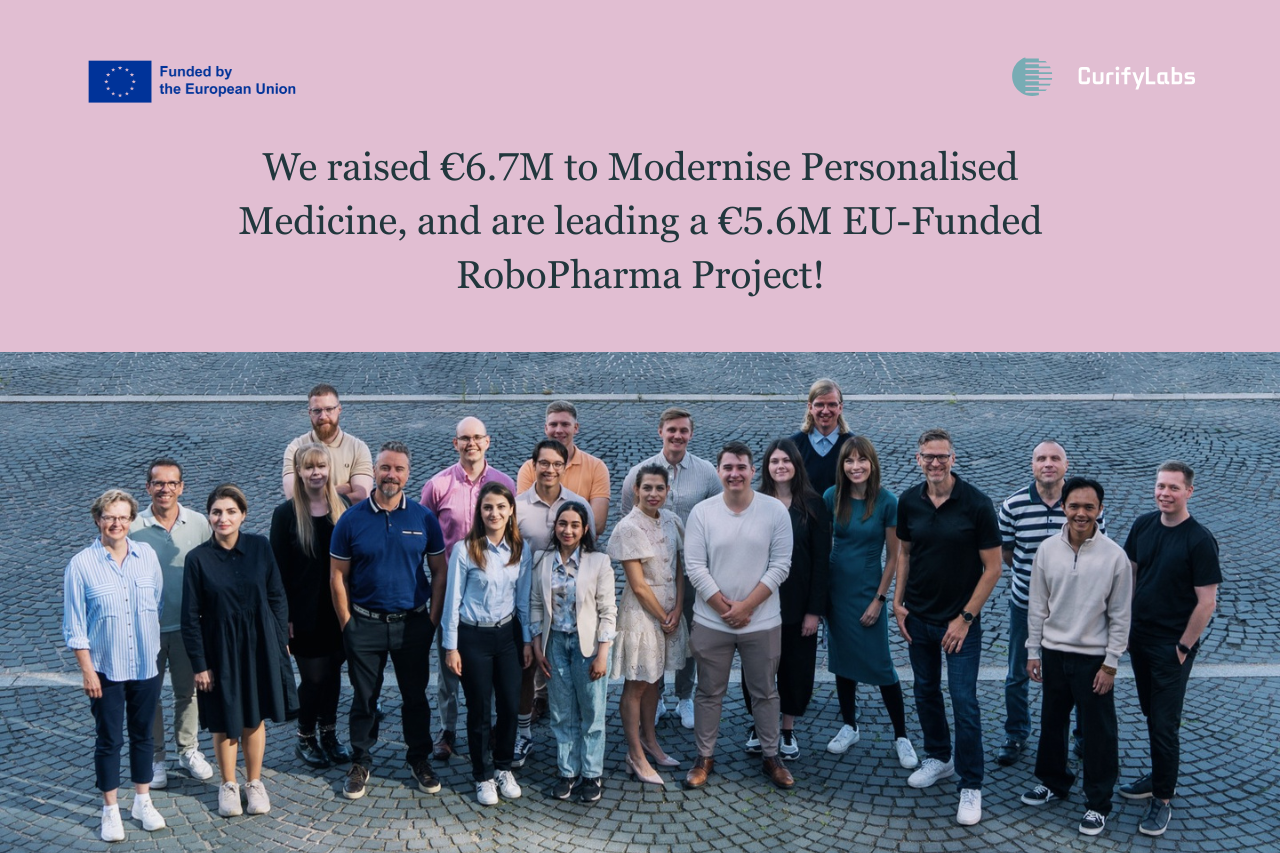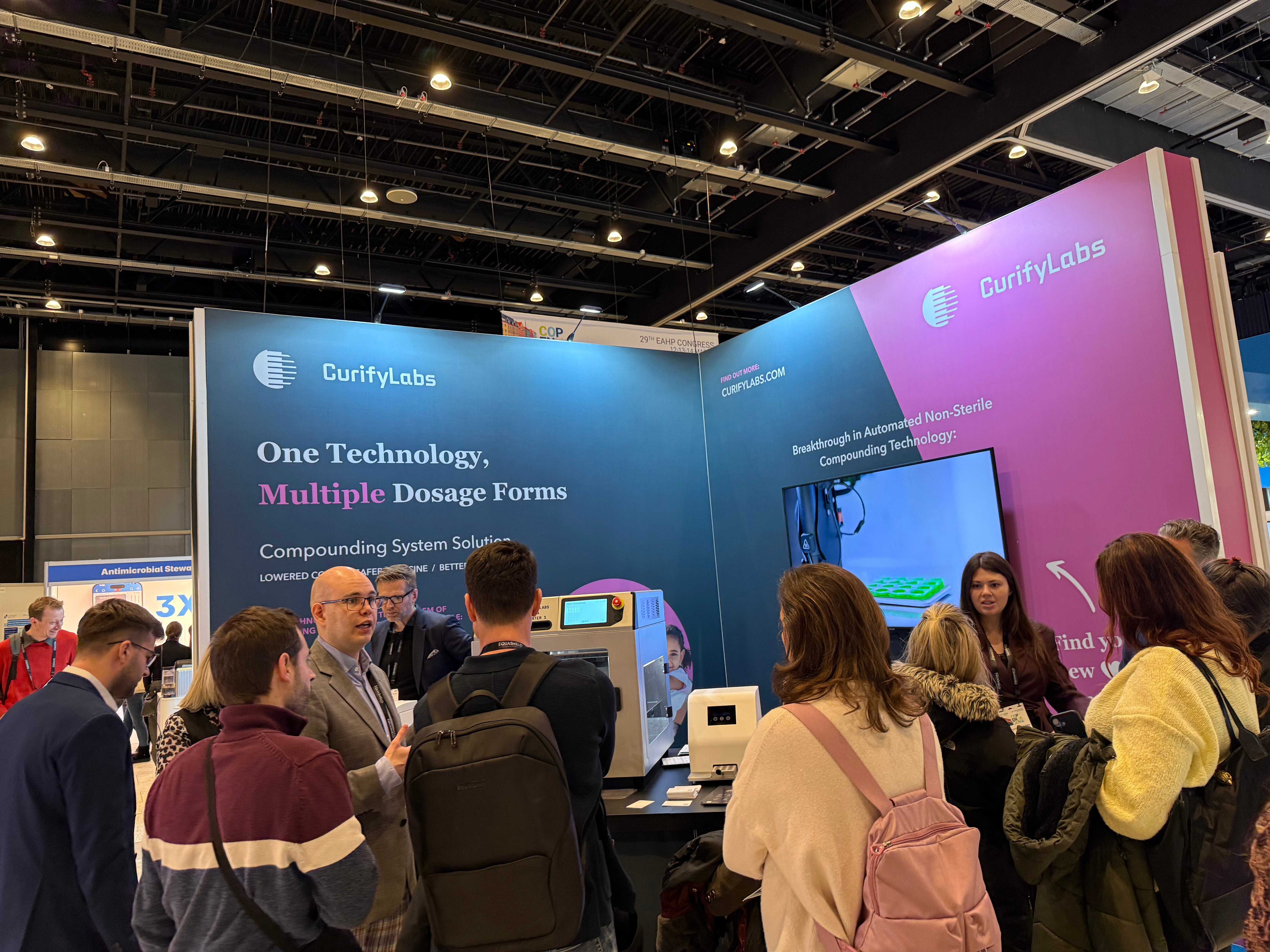Press Release: New data shows compounded medicines tackle the unmet needs and improve adherence to treatment for pediatric cancers
PRESS RELEASE
New data shows compounded medicines tackle the unmet needs and improve adherence to treatment for pediatric cancers
Many cancer medicines are developed primarily for adults, leaving few options that are suitable for children. As a result, young patients often face challenges with medication size, taste, and dosing accuracy, all factors that can make treatment adherence difficult and affect therapeutic outcomes. Recent studies are highlighting how personalized, compounded formulations can help bridge this critical gap in pediatric cancer care.
HELSINKI, Finland, October 30th, 2025 - CurifyLabs, a Finnish healthtech company focused on developing automation technology for compounding medication, reports new data on the efficacy and adherence of compounded medications in treating children with cancer. A study from Estonia shows how automated compounding of everolimus tablets enabled continued targeted therapy for a seven-year-old girl diagnosed with Diffuse Intrinsic Pontine Glioma (DIPG), one of the most aggressive pediatric brain tumors.
Additionally, a patient preference study conducted in the Naples Oncology Pediatric Hospital compared suspension medication with 3D-printed gel tablets for pediatric patients, with 90% of patients preferring jellies over suspension.
Cancer medicines are often developed for adults, with only 50% of medicines available in doses or formulations approved for children. This leads to young patients struggling with oversized tablets, unpleasant tastes, and even inaccurate dosing. For families, this can mean significant challenges in administering medication at home. The need to crush pills at home has been found to cause a high risk for medication errors, and parents are also concerned about the negative effects of the potent medication on other family members.
“This leads to situations like in Estonia, where the child being treated, despite initially responding well to treatment, began to develop severe side effects due to the commercially available dosage being too large for her,” points out Niklas Sandler Topelius, Founder and CTO of CurifyLabs.
In the Estonian study, to reduce the side effects, clinicians decided to lower the dose to 2.5 mg daily. However, no suitable 2.5 mg tablets or scored 5 mg tablets that could be divided were commercially available. Using CurifyLabs’ technology, the hospital pharmacy produced 2.5 mg gel tablets by crushing 10 mg tablets, mixing the active ingredient with excipients, and packaging the individualized doses in blister packs. The automated system minimized staff exposure to this hazardous drug while ensuring accurate, reproducible dosing. After introducing the new compounded formulation, the side effects resolved, and the patient could continue undergoing treatment at a safer, tolerable dose.
Dr. Jana Lass, Clinical Pharmacist at the Tartu University Hospital, Estonia, says that the introduction of 3D printing has had an immense effect on making medicine for pediatric patients and has changed their practices in the hospital pharmacy: “In this specific study, I was very pleased to see that the 3D printed tablets demonstrate good bioavailability.”
In Naples, pharmacist Giuseppe Fusco of Farmacia Mura Greche, Laboratorio iGalenici conducted a study in collaboration with the local pediatric hospital specialized in caring for children with cancer, using CurifyLabs’ technology to produce 3D-printed, tailored medication.
“Prior to 3D-printed medication, standardized suspensions have been the common formulation for pediatric oncology. However, liquid suspension has a strong, unpleasant taste, and children often very easily vomit after being given the medication, making adhering to treatment difficult. For the study, we had a test group of 20 children with whom we moved into using 3D-printed jellies. The criteria were that the medication needed to be easy to administer, it needed to be palatable for the children, the dosage needed to be reproducible, and it also needed to contribute positively to patient adherence to the treatment,” says pharmacist Giuseppe Fusco, Farmacia Mura Greche, Laboratorio iGalenici.
90% of the children included in the study preferred the gel tablets. Thus, administering the medication, which is often done by parents, became significantly easier.
“Adherence to therapy is significantly improved. Young patients are more willing to take jellies and, as a result, taking the medication becomes less traumatic and upsetting – for both children and their parents. The ability to prepare personalized medications is an extremely important tool for clinicians. Being able to personalize therapy, especially in pediatrics, makes it possible to choose appropriate doses and excipients that are suitable for any intolerances. Many industrial medications, particularly those used in oncology, do not have a pediatric equivalent, and therefore personalized preparations become the only possible therapeutic alternative,” says Fusco.
While compounded medications are critical when commercially available options are not suitable for the patient, just 1-3% of drugs are personalized through compounding, despite increasing demand. According to the American Cancer Society, more than 9,500 children in the United States will be diagnosed with cancer in 2025. While pediatric cancer is relatively rare, it also leads to a lack of age-appropriate formulations.
The FDA has reported that among new oncology drugs approved between 2000 and 2021, only a minority had age-appropriate formulations. Furthermore, out of 185 approved cancer drugs, 32 were allowed to be used in children. Of those 32, only about a third had been developed in child-friendly forms.
Compounded medication, however, is on the rise. Fueled by not only the need for tailored cancer medication but also by aging populations, the rise of chronic diseases, supply chain challenges, and increasing patient demand, the global compounding market, currently valued at EUR 15 billion, is expanding at a CAGR of 5.5%.
“We see the trend growing most strongly in the United States, where already, the vast majority of compounding manufacturing occurs. To be able to respond to the needs in the market, we have appointed Shawn Brinson as our U.S. General Manager,” adds CurifyLabs CEO Charlotta Topelius.
Share this
You May Also Like
These Related Stories

CurifyLabs Leads €5.6M EU-Funded RoboPharma Project and raised €6.7M to Modernise Personalised Medicine!

Thank You, EAHP 2025!
